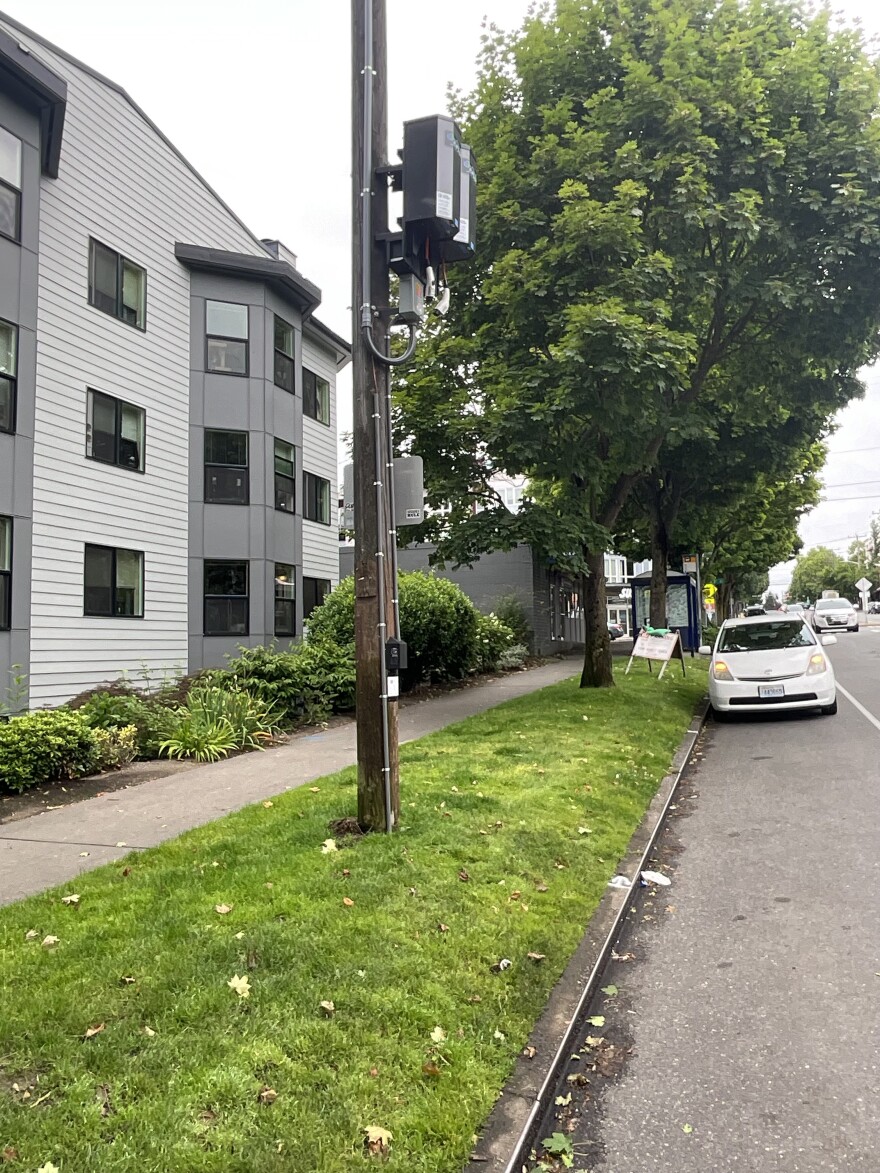What if you want to drive an electric vehicle, but you don’t have anywhere at home to charge it? Seattle City Light is providing public curbside charging stations in 31 neighborhood locations throughout the city.
The idea is to remove barriers for people interested in making the switch to an electric vehicle. So far, two of these Level 2 charging stations are up and running, with seven more expected to start working by late October.
Each location has two connections and is designed to easily provide charging for as many as 20 vehicles per week. They are Level 2 chargers, which provide about 30 miles of range per hour of charging time. The cost is 21 cents per kilowatt-hour, which provides a typical EV enough energy to travel 3 miles.
Seattle City Light has pledged to finish installing the remaining public curbside EV chargers by the end of the year. The utility maintains an online map, where you can check which Level 2 chargers are operating and which ones are yet to come online.
The map also shows the current and proposed Fast Chargers, which provide approximately 90 miles of range per 30 minutes of charging time. The utility operates these chargers in more central public places.
The curbside installations have taken longer than expected, said project coordinator Jacob Orenburg, because of some minor engineering and permitting challenges. The chargers come in three designs, with mounting on wooden utility poles, streetlight poles or small concrete pedestals.
“This is the first time anything like this has been attempted in the city. And some of these designs we're using are the first in the country. So we are learning as we go along,” he said. He expects now that the initial challenges have been resolved, the pace of installations will pick up.

“This is a pilot project. And we are going to take what we learn to revise, refine and revise the program to develop something that can be better and implemented faster in the future.”
More than a year ago, Seattle City Light invited residents to request the curbside chargers, based on need – for example, people living in apartments or houses without garages or driveways. The utility got more than 50-times as many applications as the number of stations planned – about 1800 requests for the 31 stations available in the pilot project.
“It was just really all over the map. The only thing that really stood out were where the requests weren't,” Orenberg said.
They didn’t get requests from wealthier neighborhoods, such as Magnolia or Laurelhurst, where garages and driveways are common. Most came from densely populated areas with lots of apartment buildings like Queen Anne, Capitol Hill, Fremont and Wallingford. Seattle City Light chose the locations based on Seattle’s environmental and equity goals.
“We were looking for locations that could serve the greatest number of customers. So locations were preferred if they were near multifamily housing, or if they were in locations where we received multiple requests from unique customer owners,” Orenberg said.
Extra points were also given to lower-income households, for example those enrolled in Seattle City Light’s utility discount program or living in low-income housing. Applications from rideshare or gig-economy drivers also got preference, for being high-mileage drivers.
Next year, the utility plans to offer more of these neighborhood curbside projects, possibly expanding into areas of King County that it serves outside Seattle such as Burien, White Center, Shoreline and Lake Forest Park.
Seattle City Light also has a program to support multifamily properties that want to install charging stations. It’s offering apartment- or condo buildings and houseboat associations complimentary EV charging assessments, incentives and rebates of 50-100% of cost on equipment for properties that qualify.
These programs are funded by ratepayers, to aid in the transition away from carbon-powered cars and help communities meet their carbon emissions reduction goals. Under state law, the utility is authorized to use ratepayer funds for transportation electrification programs, as long as the cost doesn’t increase rates by more than 0.25%.







